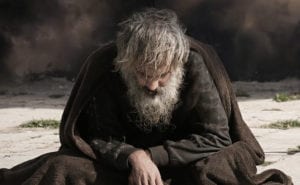In a year six classroom, a teacher gave her students lumps of clay and told them to shape freely. Their creations soon collapsed, lacking form and proportion. Then she handed them a small clay model and asked them to shape theirs around it. With a clear framework, their figures took form beautifully. That simple activity mirrors how self-image is formed. Many today shape identity without a framework—guided by slogans like “be yourself” or “follow your heart”. But when self-definition begins and ends with the self, confusion and corruption follow. We are left wondering, if our inner self were truly good, why does evil persist? The truth is, as Jesus said, “From within, out of the heart of man, come evil thoughts” (Mk 7:21–22). To be rightly formed, we need a divine pattern from outside of ourselves—an image to shape us.
Created in God’s Image
Human identity is grounded in our creation. God created humanity “in his own image … male and female he created them” (Gen 1:27, see also 5:1). Paul clarifies that this involves the knowledge of God, righteousness, and holiness (Eph 4:24; Col 3:10). These qualities express what it means to reflect God rightly—to know him truly, to live justly, and to walk in holiness.
Yet this divine image was marred by sin. Adam’s disobedience brought death and distortion, so Adam “fathered a son in his own likeness, after his image” (Gen 5:3)—a fallen likeness marked not by divine glory but by human corruption. Humanity turned inward, seeking to “make a name for ourselves” (Gen 11:4). The knowledge of God was replaced by the wisdom of the world, righteousness gave way to unrighteousness, holiness to unholiness, and life to death. Thus, humanity sinned and fell short of the glory of God (Rom 3:23); the image became a distorted reflection, unable to display his glory.
Glimpses of the Image in the Old Testament
Even amid the fall, Scripture reveals glimpses of God’s image in figures who foreshadow Christ—the true image of God (2 Cor 4:4). Each displays aspects of divine knowledge, holiness, righteousness, and eternal life.
Melchizedek appears suddenly in Genesis 14, blessing Abraham and receiving his tithe. Hebrews 7 portrays him as “without father or mother … having neither beginning of days nor end of life” (Heb 7:3). His name (King of Righteousness) and title (King of Peace) point to Christ, the eternal High Priest, whose indestructible life brings true righteousness and peace (Heb 7:16–17).
Isaiah’s Servant, upon whom the Spirit rests, brings justice to the nations (Isa 42:1, 6). In his suffering, he bears the iniquity of many and justifies them (Isa 53:11). These prophecies find fulfilment in Jesus Christ, “the Holy and Righteous One” (Acts 3:14), who bore our sins and revealed the Father’s mercy.
In Daniel 7:13–14, “one like a son of man” comes with the clouds of heaven and receives glory, authority, and eternal dominion from the Ancient of Days. The vision emphasises his divine rule. Jesus adopted this title for himself (Mk 14:62), revealing that he is the one who conquers sin and death, and reigns eternally.
Jesus Christ: The Perfect Image of God
All these glimpses converge in Jesus Christ, “the image of the invisible God” (Col 1:15). He reveals the Father, embodies holiness and righteousness, and grants eternal life. As Paul writes, “Christ Jesus … has become for us wisdom from God—that is, our righteousness, holiness and redemption” (1 Cor 1:30). Jesus alone knows the Father and makes him known (Jn 17:3). He is “holy, blameless, unstained” (Heb 7:26).
Transformed into His Image
Those united to Christ by faith share in his image. Scripture describes this as the ongoing work of God, as we, “beholding the glory of the Lord, are being transformed into his image from one degree of glory to another” (2 Cor 3:18). The Spirit restores what sin distorted, conforming us to God’s likeness in Christ. Transformation begins with faith and deepens as we grow in the knowledge of God, are sanctified in holiness, live out righteousness, and hope in eternal life.
Like streams flowing from a fountain, renewal begins in the head and the heart, and overflows through the hands and the feet. The knowledge of God renews the mind, holiness reshapes the heart, and righteousness directs the hand toward just and loving action. All of this moves toward the hope of eternal life, when the redeemed will reflect Christ’s glory (Rom 8:29–30).
As we ponder Scripture and pray the Spirit embeds Christ’s character in us, producing visible fruit that draws others to glorify God (Matt 5:16). We are God’s workmanship, created in Christ Jesus for good works that reveal his righteousness and grace (Eph 2:10).
As the students’ clay found its form by following a model, so our lives find their true shape when moulded by the image of God. For that very purpose, God sent his Son, Jesus Christ, the perfect image of God, to renew the divine image in us. In union with Jesus Christ, the Spirit forms within us the knowledge, holiness, and righteousness that reflect our Creator’s glory. The more his likeness is formed in us, the more our lives become instruments of his grace and witnesses to his gospel. We invite others to believe in him, accept him as their Saviour, and be transformed into his image—joining the great multitude from every nation who worship the Lamb (Rev 7:9). And on the day of his appearing, we shall behold his glory and be like him forever (1 Jn 3:2).










